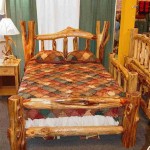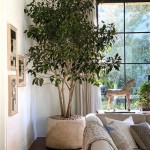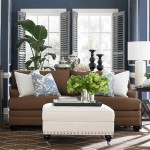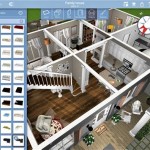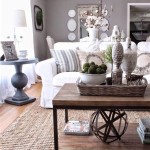4 Types of Decorative Designs
Decorative design encompasses a wide range of artistic expressions applied to objects and spaces, enhancing their aesthetic appeal. While diverse in execution, decorative designs can be categorized based on their underlying principles and characteristics. Understanding these categories provides a valuable framework for analyzing and appreciating the artistry of decoration.
One prominent category is naturalistic design. This style draws inspiration directly from nature, mimicking organic forms and patterns found in the environment. Floral motifs, animal depictions, and representations of natural landscapes are characteristic elements. Naturalistic designs often aim to capture the beauty and intricacy of the natural world, evoking a sense of tranquility and connection to the environment. Variations within this category range from highly realistic depictions to stylized interpretations of natural elements.
Examples of naturalistic design can be found across various cultures and historical periods. Ancient Egyptian art often incorporated lotus flowers, papyrus plants, and depictions of animals like scarabs and ibises. The Art Nouveau movement of the late 19th and early 20th centuries embraced flowing lines and organic forms inspired by plants and insects. Contemporary applications include botanical prints in textiles, nature-inspired murals, and furniture featuring carved leaf patterns.
Geometric design represents another fundamental category of decorative design. This style emphasizes the use of precise geometric shapes and patterns, such as lines, circles, squares, and triangles, arranged in structured compositions. Geometric designs can create a sense of order, balance, and symmetry. They offer a visual contrast to the organic fluidity of naturalistic designs, showcasing the beauty of mathematical precision and structured repetition.
Geometric patterns have a long and diverse history. Islamic art, for instance, is renowned for its intricate geometric tilework, featuring complex interlocking shapes and repeating patterns. Ancient Greek architecture utilized geometric principles in column designs and temple layouts. Modern applications of geometric design are evident in graphic design, architectural facades, and textile patterns featuring stripes, chevrons, and tessellations.
Abstract design breaks away from literal representations of the natural world or strict geometric configurations. This style explores non-representational forms, colors, and textures to create visually engaging compositions. Abstract designs often evoke emotions and ideas through the interplay of lines, shapes, and colors, prompting individual interpretations and responses. The emphasis shifts from depicting recognizable objects to expressing concepts, moods, and sensations through visual language.
Abstract art emerged as a significant movement in the 20th century, with artists like Wassily Kandinsky and Piet Mondrian pioneering new forms of visual expression. Abstract designs can be found in various contemporary applications, including painting, sculpture, textiles, and graphic design. They are often used to create dynamic and visually stimulating environments, allowing for a broad range of interpretations and aesthetic experiences.
Stylized design represents a category encompassing a wide range of artistic approaches that simplify or exaggerate forms and features. Instead of aiming for realistic depictions, stylized designs prioritize specific aesthetic qualities, emphasizing certain characteristics while minimizing others. Stylization can involve simplifying complex shapes, exaggerating proportions, or altering colors and textures to achieve a desired visual effect. Different cultures and artistic movements have developed distinct stylistic approaches, resulting in a diverse array of decorative expressions.
Examples of stylized design can be found throughout art history. Ancient Egyptian hieroglyphs represent a stylized form of writing, using simplified pictorial symbols to represent words and concepts. Japanese woodblock prints often employ stylized depictions of figures and landscapes, emphasizing bold outlines and flat areas of color. Contemporary graphic design frequently utilizes stylized imagery to convey messages effectively and create visually appealing designs.
The interplay between these four categories can lead to further nuanced classifications within decorative design. For example, a design might combine naturalistic elements with geometric patterns, or incorporate stylized representations within an abstract composition. The flexibility within these categories allows for a vast spectrum of artistic expression, enriching the visual landscape and contributing to the diverse world of decorative arts.
Understanding the characteristics of naturalistic, geometric, abstract, and stylized designs provides a framework for analyzing and appreciating the nuances of decorative arts. Recognizing these fundamental categories enables a deeper understanding of the artistic choices made by designers and craftspeople across different cultures and historical periods. This knowledge enhances the ability to interpret and appreciate the rich tapestry of decorative expressions that surround us in everyday life.
Furthermore, these categories prove useful not only for analyzing existing designs but also for inspiring new creations. By understanding the principles underlying each category, artists and designers can consciously choose specific approaches to achieve desired aesthetic effects. They can draw inspiration from the natural world, explore the precision of geometry, delve into the expressive potential of abstraction, or embrace the creative possibilities of stylization. The interplay between these categories offers endless opportunities for innovation and creative exploration within the field of decorative design.

Vector Circle Decorative Design Elements Set 4 By 123freevectors On Deviantart

Stencils Motiff 4 Damask Patterns Crafts Fabrics Tiles Trabalhos Manuais Artesanato E Faça Você Mesmo Tutorial

Designing Fabric 9 Common Patterns Deconstructed Print

A Brief History Of The Scroll Pattern Thread Ornament Drawing Ornamental Vector Renaissance Paint

Classification Of Dress Design For Fashion Designer Textile Learner

Interior Decorating And Design Styles Differences Types Lesson Transcript Study Com

Pin On Patterns I Like

7 Basic Types Of Decoration Techniques You Need To Know Outstanding Branding

40 Interior Design Styles Defined

Textile Design Types And Importance In Clothing Industry Learner
